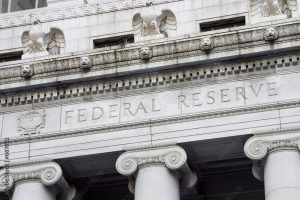Do Elections Have An Impact On Fed Rates?
 One of the most common things I hear in a presidential election year is the Federal Reserve won’t cut or raise their rate until after the election.
One of the most common things I hear in a presidential election year is the Federal Reserve won’t cut or raise their rate until after the election.
In my more than two decades as a real estate agent, I have not found this to be true. And in fact, doing so would run counter to their mission, which, according to the Fed’s own board of governors, is to “foster the stability, integrity, and efficiency of the nation’s monetary, financial, and payment systems so as to promote optimal macroeconomic performance.”
Data backs this up. During every presidential election year since 1980, the Fed has hiked or cut rates. The only exception was in 2012, when the nation was still trying to crawl out of the hole created by the financial crisis.
Was there a pattern to which they did more often? No. Half the time they cut rates. Half the time they raised them.
Was there a specific amount?
In 1980, the Fed raised rates 4% to its highest number ever; a whopping 20%! This was an attempt to curb double-digit inflation.
In 1984, the Fed rate went as high as 12.31%. That September they lowered rates to 11.75% and October to 11.5%. By year’s end, the average was near 10%.
The Fed started 1988 by cutting rates, then did an about face and hiked them through August and again after the election. The average Fed funds rate for the year was 7.57%.
In 1992, the nation was recovering from a recession. The Federal Reserve opened the year at 4.09% and was at 3.52% by December.
Perhaps one of the oddest years on record, the rate bounced between 5.1% and 5.27% throughout 1996.
Federal Reserve rates went up and down in 2000, finishing the year at an average of 6.24% after peaking at 7.03%.
In June of 2004, the Fed started a rate-hike cycle that lasted two years. However, they began from the low base of just 1%.
Both 2008 and 2020 experienced severe recessions; one a result of the financial crisis, the other due to Covid. This caused the Fed to rapidly cut rates to stave off economic collapse. This continued in 2012, but by 2016, rates were going up again as the economy continued to recover from the Great Recession.
In 2016, the Fed only hiked rates after the election at their December meeting, and continued to raise them the following two years.
Democrats were the incumbents in three years where the Federal Reserve raised rates. Republicans were the incumbents for three rate hikes as well. Democratic incumbents experienced two rate cuts as well as quantitative easing, while Republicans were the incumbents in four.
While many presidents have attempted to pressure the Federal Reserve to lower rates when they were up for re-election, the only one to succeed was Richard Nixon in 1972, who succeeded in getting them to reverse increases they’d made in the fall of 1971. The result was a decade of high inflation.

